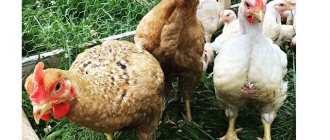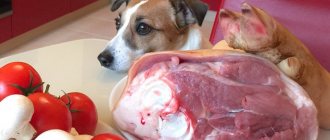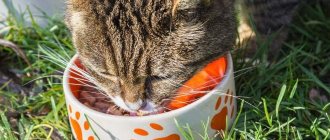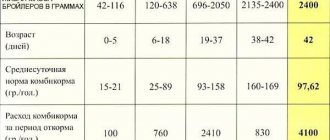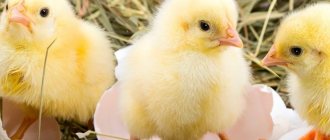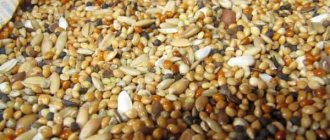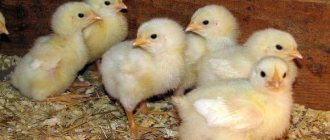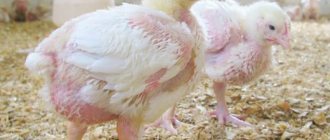The body weight and taste of broiler chicken meat depends on the feed supply. A complete set of key nutritional elements for such birds can only be provided by a combined mixture, including not only proteins, fats and carbohydrates, but also mineral and vitamin components. It should also be remembered that at different stages of life, chickens need different food (compound feed), corresponding to the needs at one or another stage of growth. Our article will tell you what feed compositions are, what age category of broilers they are intended for, and how to create a complete mixture yourself.
Purpose of feed
Broilers are a meat cross of chickens, an interspecific hybrid, early maturing, sterile, with a short life span. Designed for slaughter at 1.5-2 months. At this age, hens are still chicks, but at 7-8 weeks they should weigh about 2.5 kg, some breeds - a maximum of 4.7 kg.
Feed for broiler chickens prepared by the owners cannot provide such a set of muscle mass in a short period of time:
- from grass;
- cereals;
- fruit or vegetable waste.
Compound feed for broilers includes all products from the natural diet of chickens. A balanced basis consists of several types of grains, which are better absorbed when crushed, plus special additives.
The diet of laying hens and broilers should be different: some give eggs, others give meat.
Advantages of combined feeds over conventional feeds for meat breed chickens:
components are selected according to their chemical composition, which is difficult to do on your own;
broilers are fully provided with food, except water; nothing else needs to be given;
designed for rapid muscle growth;
there are species balanced for different ages - from birth to slaughter;
starter feed reduces chick mortality;
special additives in the form of enzymes, biologically active substances, nutrients (vitamins and minerals) stimulate the potential inherent in the broiler breed;
are better digestible, which reduces feed consumption while maintaining the efficiency of poultry farming;
chickens' immunity is strengthened;
helps young animals to properly form the skeleton and develop;
saves time on preparing feed;
broilers grow quickly, which reduces the cost of poultry;
there are feeds containing not only nutrients, but also antibiotics and growth stimulants;
chilling, which farmers often do not do when preparing mash, improves the taste, and the birds eat more.
Useful tips
Along with proper feeding, it is necessary to timely vaccinate birds against diseases using antibiotics, and also periodically add potassium permanganate to drinking water, which will prevent stomach upsets and improve the microflora of the digestive system.
It is necessary to carefully prepare the pen upon settlement. The floors and walls of the room should be covered with whitewash, which will reduce the likelihood of epidemics and diseases of the bird.
It is recommended to clean the room daily of waste products and carefully ensure that they do not get into food or drink.
No less dangerous for livestock can be the presence of moisture on the floor or walls. In a poultry pen, any damp surface will be an ideal environment for the development of bacteria, which can lead not only to digestive disorders, but also to infections leading to death.
It is recommended to monitor the humidity in the room and establish minimal ventilation. With high or low humidity, the activity of animals decreases, anomalies in development and losses in livestock begin.
Without ventilation, ammonia and other associated gases can threaten the safety of broilers.
Access to feeders and drinkers should not be difficult, and there should be no crowding in the pen. It is worth paying attention to hygiene: drinkers and feeders should be higher than floor level, chickens should not walk or defecate in feeding areas.
Composition and forms of mixed feed
Compound feed for broiler chickens, egg-laying hens and meat-egg breeds is divided into two types:
- Complete, including all nutrients. The group includes feed for broilers Start, Growth, Finish, on which you can keep birds from the first days of life until slaughter.
- Balancing additives should be given to broilers in addition to mash, pasture or combination feed, which does not contain nutrients. These are yeast, malt, protein-vitamin-mineral concentrate (PVMC), premixes.
Additives are classified as compound feeds, although they are not always considered as such. Concentrates are not included in the list, since they are usually used to feed cattle, not poultry.
Compound
Different manufacturers add to feed:
- antibiotics;
- growth stimulants;
- vitamins;
- enzymes;
- amino acids;
- flavorings;
- probiotics.
If they are not there, give them separately or mix them with food. Flavoring additives are also needed, otherwise the chickens may simply refuse to eat. It is better to immediately buy good food that includes all the components that they plan to feed the chickens when they are raised.
Dry matter in broiler feeding mixtures should include:
- proteins;
- fiber;
- fat;
- starch is a source of glucose;
- amino acids (lysine is especially important);
- mineral components for poultry health and skeletal formation.
High-quality compound feed consists of natural products, it includes:
- corn is an indispensable starter for chickens;
- wheat, the share of which in individual brands of Rost and Finish feeds can exceed corn and amount to up to 60%;
- barley;
- peas;
- cake;
- fish, meat and bone meal;
- production waste after processing oilseeds, mostly sunflower;
- limestone;
- bran;
- grass meal;
- skim milk powder substitute.
Compound feed for broiler chickens should contain:
- calcium, potassium, phosphorus - are necessary for a living organism to fully develop;
- sodium - for fluid regulation;
- iodine - normalizes the functioning of the endocrine system;
- iron, cobalt, copper - are involved in hematopoiesis;
- Vitamins required for broilers are C, D, E, B, K.
The last component is sometimes not included in mixed feed, which is a disadvantage. Often the composition includes butyric acid, which stimulates the intestines.
Typically, feed based on grass meal is not used to feed broilers, since it does not contain enough protein to quickly increase the weight of the bird.
Release forms
Depending on their age, chickens eat food that has been ground to varying degrees better. For example, Start for broilers must be of a fine fraction, otherwise it will be difficult for the chickens to peck at first and then to digest it. They might just end up hungry.
Finish feed for broilers, on the contrary, should combine large and small particles. This is good for the intestines and increases food digestibility.
Compound feed goes on sale:
- Briquetted , convenient for transportation to large poultry farms. It takes up little space, is stored for a long time, and does not deteriorate during transportation, which is important for significant volumes of purchases.
- Loose . The cheapest, has a long shelf life, but is inconvenient for storage or transportation. Typically, this type of feed can be bought in the markets in buckets or by weight. It is necessary to ensure that the composition is homogeneous - it tends to separate over time and can harm broilers.
- Granulated , ready to use, convenient for the Growth and Finish stages. But it costs more than loose or briquetted.
- Grits are obtained by crushing granules into fractions of the required size. This is exactly what Start feed for chickens should be.
Dry granulated mixtures are better stored, more convenient to use, and are completely eaten by broilers. The chickens themselves prefer this food. The exception is pre-start feed for young animals. It is better absorbed by newborn chicks when wet; it is recommended to soak the dry one in skim milk or kefir.
For bagged food, you should definitely look at the expiration date. Consisting of natural ingredients, they are usually stored for no longer than six months. Recommendations for use and composition must be indicated on the packaging, otherwise the product is of dubious origin.
Expired feed should not be given to broilers, especially if it contains antibiotics. With a loose product, when purchasing by weight or volume, you will have to rely only on appearance.
conclusions
- Combined feed mixtures allow you to obtain the largest amount of meat, for this reason they are in great demand among broiler poultry farms.
- Compound feeds are divided into three main types: starting (start), growth and finishing (finish), depending on the period of feeding to the livestock.
- Different types of feed differ from each other in composition and feeding regime for birds.
- You can prepare such bird food yourself, with your own hands according to the table, instructions, and calculations; this will help you save on the purchase of factory-made products.
The best manufacturers of feed for broilers
It is correct to buy compound feed not in buckets or by weight, but sealed. This is how you can find out for sure:
- date of manufacture;
- manufacturer;
- compound;
- best before date;
- mode of application.
Packaging usually starts from 5 kg, which is suitable for small farms, but the bulk of the product is sold in 15-25 kg bags. You need to choose based on composition; perhaps some component is simply not needed, but it increases the cost of the feed.
Vaccination is carried out at poultry farms, so there is no point in feeding broilers with antibiotics. In private farms that raise poultry for their own needs, growth hormones are usually not included in the chicken diet.
World leaders in the production of combined feeds for broilers:
- Addcon (Germany);
- Adisseo SAS (France);
- AB Agri (UK);
- Purina (USA);
- AGRAVIS Raiffeisen (Germany).
The best domestic manufacturers:
- Prioskolye;
- KomosGroup Holding;
- Group of Agricultural Enterprises Resource;
- Feed mill named after. Kirov;
- Bioenergy;
- Southern Crown;
- LLC Agroserviszerno;
- BioPro.
Standards
There is a GOST for the production of fattening feed. The recipe varies, but manufacturers must take into account the following characteristics:
- exchange energy;
- raw protein;
- raw lysine;
- cystine and methionine in raw form;
- proportion of the weight of crude fiber, fat, moisture;
- mass of phosphorus, sodium, calcium and salt.
Different proportions in recipes may show numbers that correspond to the standard. Manufacturers, adhering to GOST, are trying to reduce the cost of production, which has a bad effect on the quality of the mixture.
Feeding standards according to age
When raising broilers, you need to take care of feeders of different sizes. Otherwise, a bird ready for slaughter will have food scattered throughout the cage, and day-old chicks will have to climb into a large feeder in search of food.
There should always be clean water in drinking bowls.
It is better to present the feeding regimen in the form of a table.
| Pre-start | Start | Height | Finish | ||
| Broiler age, days | 2021-05-03 00:00:00 | 2014-06-01 00:00:00 | 14-21 | 21-28 | from 29 to slaughter |
| Daily value, g | 2020-10-01 00:00:00 | 20-40 | 60 | 80 | 115-170 |
| Number of meals | 2021-08-06 00:00:00 | 4 | 3 | 2021-03-02 00:00:00 | |
| Weight gain per day, g | 15 | 33 | 54 | 56 |
Every 2 weeks the amount of feed is increased by approximately 20 g.
Feeding standards are subject to correction. Broilers should not be hungry, but if food remains, it will have to be replaced, which can lead to additional costs.
Chickens need to be watched:
- when the feed is eaten in less than half an hour, the norm needs to be increased;
- if there is something left after 45 minutes, reduce it.
General rules for feeding boilers and chickens at home
Three weeks after the chicks are born, the poultry farmer must transfer them from starter feed to finishing feed. The daily menu should be diversified with protein, without which normal growth and development of the chick is impossible. To do this, you should cook cereal for broilers every day in meat broth and boil fish periodically.
Broilers
Once the chicks’ digestive system gets used to this diet, yeast can be added to the diet. This will become a preventive measure against various diseases.
Gradually, boiled potatoes mixed with cereal are added to the menu. Experts consider it unacceptable to feed chickens with raw water, so children should be offered chamomile decoction or rosehip infusion as a liquid.
Self-preparation of feed
On the first day, the chickens need to be fed with hard-boiled yolk and water; on the second day, cottage cheese is added. From days 3 to 6, add boiled ground corn and vegetables, chop fresh herbs.
To independently prepare starter feed, corn is used as a basis; Growth and Finish is wheat. Needed:
- crusher;
- grain stocks;
- fish meal, meat and bone meal;
- cake;
- legumes;
- BVMK or premix.
All products must be of high quality. You can take corn flour, but not wheat flour - in the stomach of chickens it forms a sticky lump that is poorly digested and difficult to pass through the esophagus. When using oats, the grain is washed and the husks and awns are removed.
Cooking methods
You can make feed according to different recipes, but you must strictly follow the proportions. Otherwise, you will end up with an excess of some nutrients and a deficiency of others. Grind the ingredients and mix thoroughly.
| Start | Height | Finish | |||
| Ingredients | % | Ingredients | % | Ingredients | % |
| corn flour | 50 | corn | 45 | corn | 20 |
| wheat | 16 | oilseed cake | 15 | barley | 20 |
| cake | 14 | wheat | 10 | wheat | 20 |
| barley | 8 | soybeans | 10 | soybeans | 20 |
| low-fat kefir | 10 | fish flour | 9 | peas | 5 |
| premix, shell rock, fresh grass, chalk | 5 | cake | 5 | ||
| premix | 10 | ||||
| 6 |
Yeasting
The process of grain fermentation enriches the feed with vitamins, increases the biological value and digestibility. The yeasted product is gradually introduced into the diet of broilers, 5-7 g are given for the first time.
You cannot feed chickens both grass and fermented grain.
Preparation:
- Baker's yeast is dissolved in a small amount of warm water.
- Bring to 1.5 liters. The temperature of the liquid should be 40-50° C.
- Add 1 kg of feed.
- Leave in a warm place for 9 hours.
- Feed to broilers at one time.
DIY chick start
It is convenient to use ready-made feed, but this feeding option is more suitable for large farms. Farmers can prepare feed mixtures themselves. All components can be purchased on the market. To grind them, you will need a grain crusher - large particles are contraindicated for chicks, the optimal fraction is 2x2 or 3x3 mm. To ensure the correct ratio of ingredients, scales are used. Sample recipe for homemade feed:
- crushed corn, barley and wheat - 45, 15 and 10%, respectively;
- meal – 10%;
- feed yeast – 5%;
- fishmeal – 7%;
- herbal flour – 3%;
- fish oil – 1%;
- chalk – 1%;
- premix
Blend selection
If you can’t prepare food yourself, it’s better to buy it in bulk. When choosing mixtures, they are guided by the region where the farm is kept.
The rating of dry food will help you decide on the brand.
You should not opt for elite companies. Due to their high price, it will be difficult to make a profit. For beginners, it is better to read expert advice on forums, as well as reviews from farmers. Responsible manufacturers provide accurate information about feed on their official websites.
Among the known varieties, the following mixtures are distinguished:
- Mix;
- Purina;
- Rozovka;
- Selevana;
- Bogdanovich;
- Southern crown.
Purina and Rozovsky's complementary foods are used as a preventative against diseases. Provimi provides the birds with Champion, Best, Grover or Kalinka food.
The highest quality bird food is produced in Ukraine, Belarus, Poland and other European countries. In Minsk, Gomel, Kursk, Saratov and Vitebsk, they buy mixtures via the Internet without worrying about their quality. Dry mixtures are also produced in Kharkov and the Poltava region. Many enterprises offer delivery for wholesale purchases even to the most remote regions, including Crimea. Sales are also carried out in many regions of Russia:
- Permian;
- Krasnodar region;
- Voronezh;
- Rostov-on-Don;
- Chelyabinsk;
- Tosno and others.
Farms located in Samara, Nizhny Novgorod, Pospelikha, Ufa and Slavyansk do not need to buy feed in reserve. In these regions, production occurs year-round.
Nutritional value of feed
We consider the types of feed used, their purpose and impact on the life activity of chickens in the table:
| Nutrients | Main source | Importance in the bird's body |
| Proteins (proteins) | Legumes and cereal grains; cakes, meal; dairy products, animal waste, fish and meat and bone meal | Formation and restoration of tissues, primarily muscle, in the process of metabolism in growing young animals; formation of energy, eggs, as well as fat deposits (if there is excess); maintaining body temperature |
| Fats | Cake, meal, technical and fish oil | A set of adipose tissue; stimulation of oogenesis; absorption of fat-soluble vitamins; maintaining a stable temperature |
| Carbohydrates | Legumes and cereal grains, potatoes, root vegetables, vegetables | Production of energy, eggs, adipose tissue; ensuring metabolic processes and optimal body temperature |
| Mineral elements | Shell, chalk, lime, bone and fish meal, table salt | Formation and strengthening of bone tissue; stimulation of metabolism, oogenesis, gastric juice secretion and enzyme activity; regulation of water-salt balance |
| Vitamins: | ||
| A | Fish oil, red carrots, pumpkin, grass, pine needles, milk | Ensures normal growth of young animals, high egg production and hatchability of chickens, resistance to diseases |
| D | Fish oil, herbal legume meal | Regulates phosphorus-calcium metabolism, promotes bone strengthening and shell formation |
| B1 | Grass flour, bran, oats, dairy products, yeast | Promotes carbohydrate metabolism, formation of glycogen (animal starch) |
| B2 | Sprouted grain, feed yeast | Supports normal functioning of the nervous system; increases egg production and hatchability of young animals |
| B6 | Grass meal, feed yeast, bran | Stimulates growth; prevents the occurrence of skin and eye diseases |
| E | Greens, grass flour, sprouted grains, yeast | Ensures the activity of the reproductive process: improves the development of eggs and increases the quality of sperm (fertilizing ability); eliminates the risk of exudative diabetes and encephalomalacia |
How to make it yourself: how much you need
Making your own feed mixtures can reduce feeding costs, especially if you use products available on the farm. The only equipment needed is a corn grinder. In addition, it is not possible to purchase low-quality feed mixtures, since the production process and composition can be controlled by the farmer. Remember to calculate the amount of each type of feed per number of broilers.
Read about proper raising of broilers at home at this link.
Good pre-start and start
Corn is the basis of the starter feed. Corn makes up almost half of the total and cannot be replaced (there are no cheaper or more accessible alternatives to this crop). Another 20% of the mixture is sunflower meal and cake, which can be replaced with the same products from any oilseed crop (rapeseed, flax). Of the grain crops, the most suitable for chickens are wheat or oats, accounting for 17-19% of the total feed. Add grass meal or dried plantain as a vitamin supplement. Also add some food or fish oil and a vitamin premix with a good shelf life.
Cooking at home with your own hands: instructions, consumption conditions
Compound feed for growing at home is prepared (cooking) from:
- meat and bone meal;
- herbal granules;
- dried mountain oil.
- corn grain
- growth yeast;
- feed fat (no more than 2%);
- oats or wheat;
- barley;
After grinding, dilute the mixture with water until a thick, fleshy mass is formed, which is then passed through a meat grinder. You'll have easy-to-store granules, just let them dry thoroughly. Just before serving, add eggs or dairy.
You can add table salt, feed chalk, protein and vitamin concentrates, maximum 3%.
In summer, greens from the garden plot are an excellent addition, and chickens do not disdain weeds. Millets, rice grains and vegetable scraps can also be fed periodically.
Finish for broiler: how to feed and raise
This type of feed mixture should be prepared in the largest quantity, since it is required during the longest fattening phase. The finishing plan includes:
- feed yeast;
- wheat, oats or barley;
- protein-vitamin concentrate (up to 12% of total weight)
- corn grains;
- chalk or limestone
- feed fat;
- all legumes (peas, beans, soybeans);
The granules should be as large as possible to increase the time of eating, digestion and the percentage of well-absorbed nutrients.
